Economical garage heating with your own hands: how to reduce heat loss and the best way to heat it
Many motorists are sensitive to their cars, so they are ready to invest time and effort into improving their garages.Often, the room performs not only its direct functions: it is used as a workshop, storage room, and even a place for relaxation in a male company.
If you arrange economical garage heating with your own hands, you will be comfortable in it for many hours. Let's try to figure out how to properly heat a garage and what you need to pay attention to so as not to go broke paying bills.
The content of the article:
Advantages and disadvantages of various systems
A garage heating system must be cheap, and this is the main requirement. The owner of a garage has to invest a lot of money in maintaining and repairing the car, and arranging the premises for it. This is costly, and it is worth taking every opportunity to reduce the cost of heating.
On the other hand, savings must be reasonable: without compromising the efficiency or safety of the system.
There are many different types of systems and devices that can be used to heat a garage. They are not perfect and have their own shortcomings. Each owner has to decide which selection criteria are most important to him.
Option No. 1 - classic water heating
To connect heating to the garage, it is not necessary to install a separate boiler, but an additional load is placed on the overall system. This must be taken into account when purchasing heating devices and take them with a power reserve.
Fuel consumption also increases, but the costs are still lower compared to installing a separate heating system for the garage.
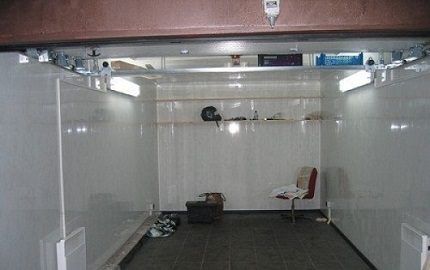
The second option is to install a garage heating system with a separate boiler.This is a good solution if the building is located far from the house and the heat loss when moving heated water through pipelines is too great.
When installing a water system with a separate boiler, it is worth using antifreeze as a coolant to prevent possible defrosting.
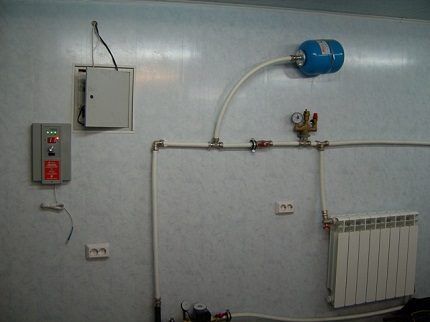
The coolant is heated in the boiler and flows through the pipeline to the radiators. Cooling down, it returns to the heater again. The system can be one- or two-pipe. This determines whether the radiators will be connected to the boiler in parallel or in series.
The first type of connection guarantees equal heating of all radiators, but it requires two pipelines.
For a garage, a single-pipe system is best. This scheme allows you to arrange heating with minimal costs for materials, and installation is also simplified. If there are several radiators, they are connected in series.
It is worth considering: in each subsequent device the coolant temperature decreases.
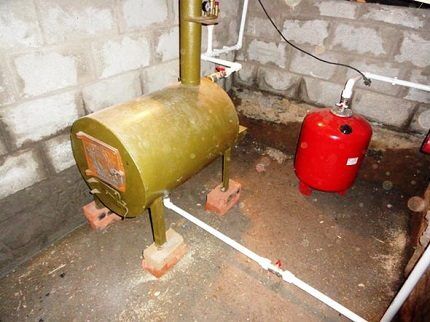
Spacious garages, commercial auto repair shops, and service stations are equipped with a full-fledged dual-circuit heating system. You have to spend money on more materials and complex installation, but the heating of the room will be uniform and efficient.
Option No. 2 - heating with gas
Gas heating is the cheapest, but to connect to the main line you will have to obtain permission from the relevant services. In many cases, garage owners try to avoid a long approval procedure.
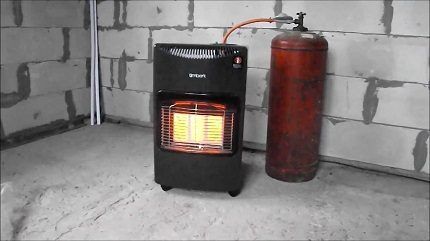
Another nuance: for unauthorized connection to the main pipeline or carrying out commissioning work, you can pay a serious fine.
Therefore, it is advisable to do everything according to the rules or use bottled gas mixtures.
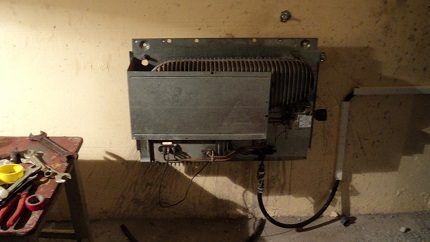
If you connect to the mains, you can provide cheap and highly efficient heating. If you have to use liquefied gas, then you should choose a device that uses fuel economically. This could be a gas heat gun, an infrared heater or a convector.
Option No. 3 - electric heating
Electrical appliances are considered the safest. They are easy to use, compact, efficient and can instantly warm up rooms. Any buyer will find a model of the required power and with the necessary technical parameters.
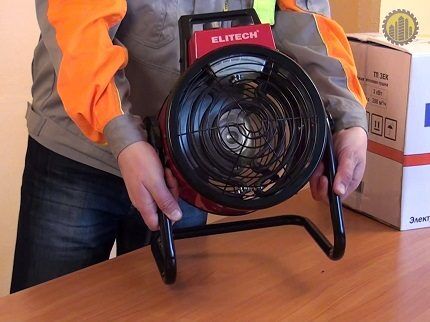
The only drawback of electricity is the high cost, and this immediately negates all the advantages.Such electrical appliances should be chosen only for rooms where the owner spends little time. For constant heating of a garage, electric heaters are unprofitable.
A rational solution is to purchase a mobile infrared heater, convector, fan heater or heat guns. They are easy to carry and move from place to place. The most powerful and practical devices - heat guns.
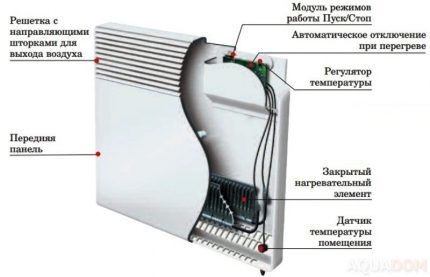
Bad option - oil heater. The device has its advantages, but is more suitable for long-term heating. In addition, it consumes a lot of energy resources and slowly warms the air.
However, there are exceptions. So, a homemade heater assembled from an old cast-iron radiator and heating element will cost literally pennies. The power of the heating element is chosen by the owner himself, and used oil can be used as a coolant.
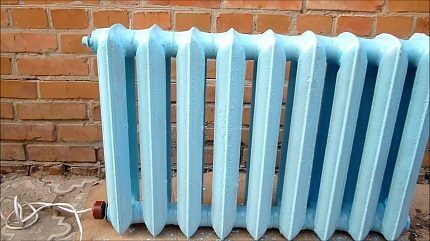
If you add metal legs and attach a dryer to a homemade heater, you get a convenient multifunctional device. How to make it is described in the master class, which can be found in our selection of videos.
Option No. 4 - solid fuel devices
Solid fuel boilers and stoves are very profitable due to the low cost of coal and firewood. The disadvantages include the need chimney construction, which leads to a slight increase in the cost of the system.
These costs are paid off due to the long service life, efficiency of the stoves, and low cost of fuel (you can use waste: sawdust, wood scraps, any combustible materials).
A solid fuel stove is cheap and does not require connection to centralized communication networks or obtaining permission for installation. However, it is worth mentioning the disadvantages: increased fire hazard, the need for constant combustion control, the smell of smoke in the room, the release of harmful substances into the air.
Option No. 5 - liquid fuel stoves and boilers
Heating appliances running on diesel fuel, diesel fuel, and waste fuel are popular. You don't have to buy them in the store. It is quite possible to assemble a liquid fuel boiler with your own hands, garage oven and even a heat gun.The housings of such devices are made from gas cylinders, old barrels, and heat-resistant steel sheets.
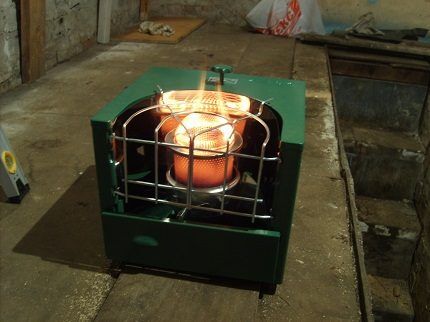
Homemade stoves are not as economical as industrially produced models, but they also allow you to save a lot on heating costs. Fuel consumption of a homemade miracle stove or heat gun made with your own hands is approximately 0.5-0.7 l/hour depending on the power.
What type of heating is most profitable?
It all depends on the specific operating conditions and preferences of the garage owner. The cheapest system is a single-pipe water system powered by a gas boiler.
You will have to invest a lot of money in its arrangement, but it is so economical that the costs will be recouped in 1-2 heating seasons. However, this solution is not suitable for everyone.
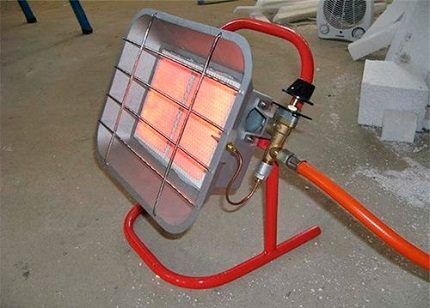
You can economically heat your garage using gas cylinders or solid fuel. These options are not suitable if it is not possible to control the operation of the devices, but they are good for heating while the owner is in the garage.
How to reduce heat loss and not go broke?
No heating system will be profitable and efficient if care is not taken to reduce heat loss. Heaters will waste a huge amount of energy resources. This is expensive and impractical, so you will have to insulate the gates, walls, floor and roof.
You can use expanded clay, polystyrene concrete, foil insulation, but the cheapest and most versatile option is polystyrene foam. It is suitable for insulating all structural elements.
It can also be used for thermal insulation of the floor, provided that a floating screed is made: polystyrene foam does not tolerate mechanical stress well, so it is filled with cement.
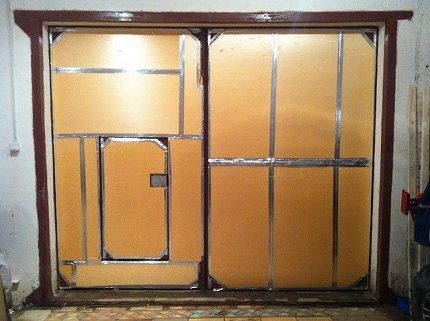
The ceiling, walls and garage doors are covered with polystyrene foam. There are two options - external or external wall decoration. Both are equally effective and allow for excellent thermal insulation of the building. The choice should be based on the convenience of the garage owner himself.
Conclusions and useful video on the topic
We offer a selection of videos that will help you better understand the issues of heating and insulation of the garage.
Instructions for assembling a super-economical water heating system:
Mini-review of an economical gas stove that consumes 0.5 liters of gas per hour:
Tips for self-assembling an oil heater from a used cast iron radiator:
Video instructions for rational organization of heating in the garage:
Recommendations for reducing heat loss in the garage:
The issue of heating a garage is not difficult to solve. It is enough to understand the main advantages of each heating system and possible limitations in its use. You should choose based on your own needs.
The main thing is not to forget about fire safety rules. No amount of savings is worth putting your car and your own health at risk.
Perhaps you have personal experience in arranging heating for a garage? Please share your own opinion with our readers, tell us which heating system you prefer and why. Leave your comments and ask questions in the block below.




I like to tinker with cars, so I decided to install heating in my new garage at the same time, so that nothing would bother me in the winter. It took me a long time to decide how to heat it, but I finally decided to install water heating. I ran the pipes from the house, which in my opinion is the most reliable way. We did it in 5 days, spent a little more than 25 thousand, but if you don’t understand it yourself, then it’s better to turn to knowledgeable people for help.
After all, the usual situation for our country is garage cooperatives in a relative distance from residential buildings. Therefore, connecting your garage to a common heating system is quite problematic, in my opinion. So the only available options are stoves and electric heating. But electricity is quite expensive, so most people heat it with wood and coal.
I don’t understand the joke in the photo, why on the Buleryan the upper circulation pipes were vented to the atmosphere, while the air circulation should be inside the garage? What specialist did this?
I, too, at first did not understand what was happening and thought in the same way that the upper circulation pipes from the Buleryan were vented into the atmosphere. But everything is not so simple; a complex idea has been implemented here, as it turns out.
In this case, heating combined with ventilation is implemented.The heating and ventilation unit itself is not visible in the photograph; for a clear example, I will attach a photograph of the OV65 unit.
Today, heating furnaces in combination with an air duct system have been increasingly used in our country in recent years. In the photo, where in the garage the Buleryan with communications connected to the heating and ventilation unit most likely heats not only the garage, but also other rooms. It is possible that the garage is large, for 3-4 cars, then such an implementation is justified.
For small spaces this option is best - https://www.youtube.com/watch?v=Qq4zmnxwXns
I have a stove in my garage, like everyone else :)) and hung a ceramic IR heater. The criterion was the fire safety of the device, because designed to work precisely in my absence. Consumes 300w. I set the thermostat to 5-7 degrees to save energy. And of course, I insulated everything in the garage. There is also a gas gun - in severe frosts it heats up instantly.
In addition to the solid fuel stove, I installed a Chinese analogue of Webasto running on diesel fuel. For me, this is the best option at the moment.